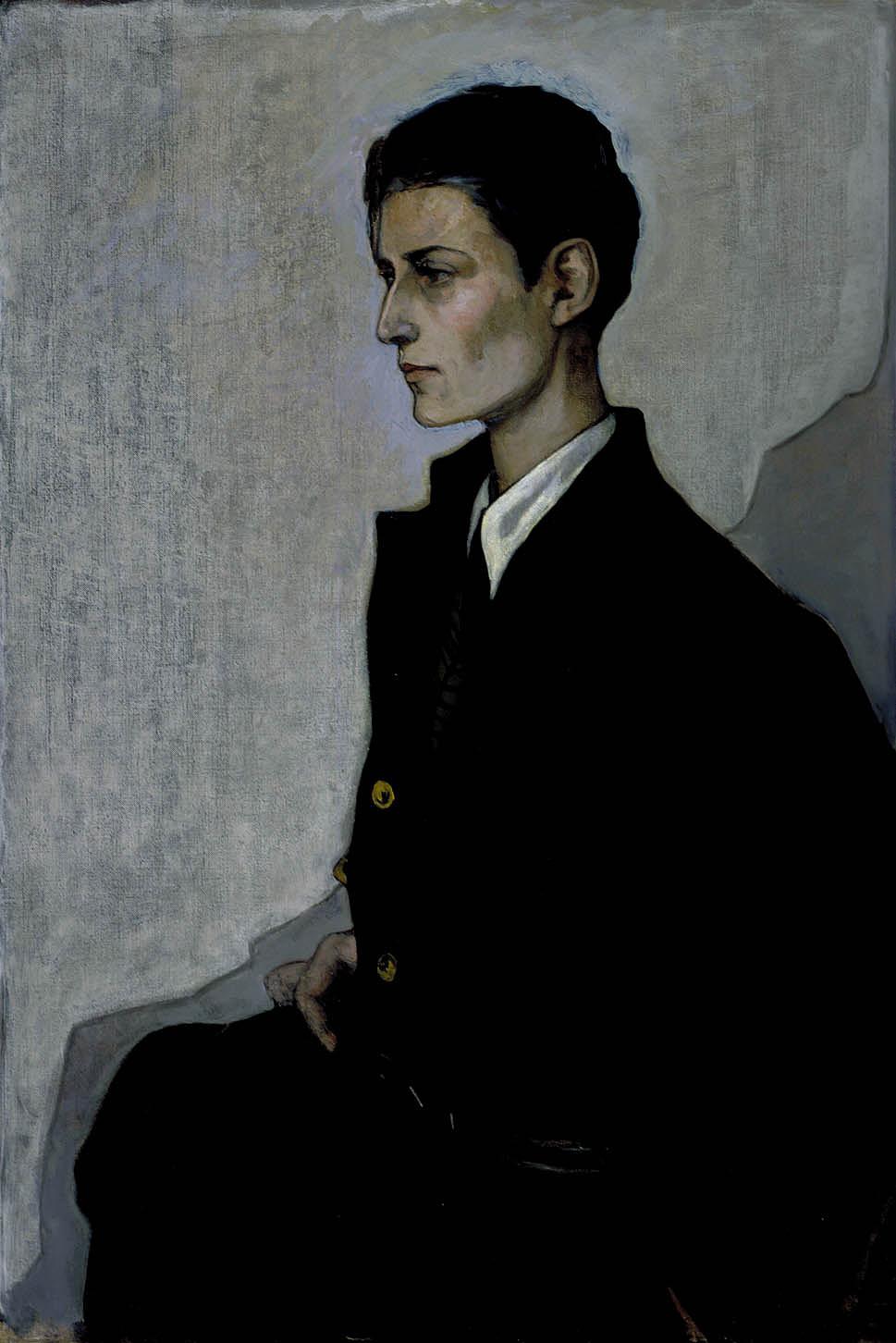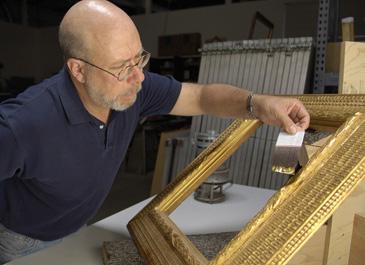
Romaine Brooks was something of an interior decorator as well as an artist. She took a lively interest in the frame designs and finishes for her artworks. Several of the paintings in the exhibition The Art of Romaine Brooks are in frames that she personally designed or that were prepared under her direction.
Other Brooks paintings, however, came to SAAM years ago in frames that have no connection to her. We took the opportunity of our recent exhibition to reframe some of those for the show, creating frames that more closely resemble those she designed or chose. The frame for Peter, A Young English Girl was created by Eli Wilner & Company of New York as a gift to the museum. The frame for Le Piano was created in our own Lunder frame conservation lab by Martin Kotler.
Eli Wilner & Company created the frame for Brooks' Peter, A Young English Girl, taking cues from the artist's own enhancements to an Art Deco-inspired frame on Brooks' Self Portrait along with as other frames in the exhibition. The Wilner staff took photographs during a site visit, and also consulted notes in a frame treatment report and used a frame profile drawing provided by Kotler. For further character, they referenced and analyzed silver frames from a similar period that are in the Wilner inventory. In order to maximize accuracy, the studio craftspeople created a subtle range of profile samples for the curatorial staff to review alongside the painting itself.
The chosen finish was silver-gilded, with underlayers of gesso and a slightly orange-red clay, purposefully omitting the standard layer of ochre clay to help achieve the desired color and luminosity. After sealing the gilding, they applied an extremely thin layer of aluminum paint, followed in the normal manner with casein. Throughout the process, various in-house techniques were devised through experimentation to give the frame a sense of age, and to replicate the complex nature of the surface, including incorporating a small amount of powdered silver to imitate a unique, somewhat glittery feature that exists intermittently on the original, artist-made frame.
Before Martin Kotler began constructing his frame for Brooks' Le Piano, Chief of Conservation Tiarna Doherty was in the process of conserving the painting, which required a careful study of Brooks' techniques. Doherty found that Brooks began her paintings by toning her ground with diluted black paint, before subsequently applying layers of grays and glazes made from oil mixed with varnish. In fact, the artist used a similar approach with a number of her frames: the wood was first toned with a black stain, then gilded with a silver-colored leaf. Kotler emulated these aspects of Brooks' technique to create his frame for the Le Piano.
Virginia Mecklenburg, Chief Curator, discussed and reviewed Kotler's approach along the way. He constructed the frame of oak-veneered plywood over poplar hardwood, choosing the oak because its heavily-grained characteristic would telescope through the metal leaf-gilded surface. In addition, oak is commonly used in France, where other frames in the Romaine Brooks exhibition were made, making it a natural choice.
The Art of Romaine Brooks continues through October 2, 2016. When visiting the exhibition, we hope you will look closely, not only at Brooks' extraordinary paintings and drawings, but at their striking frames as well.
Abigail Choudhury contributed to this post.




















